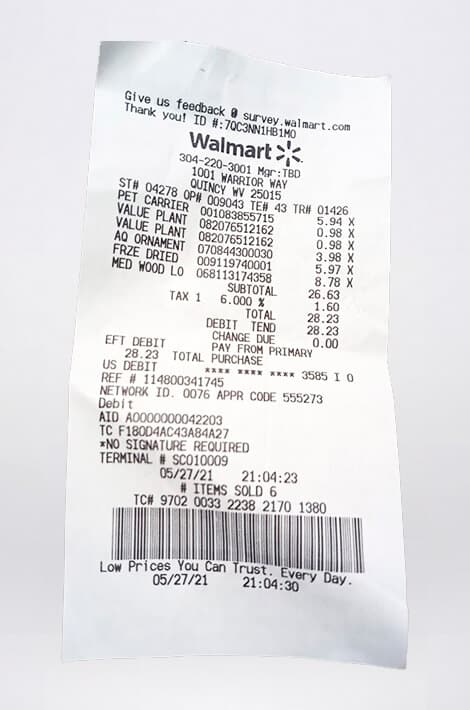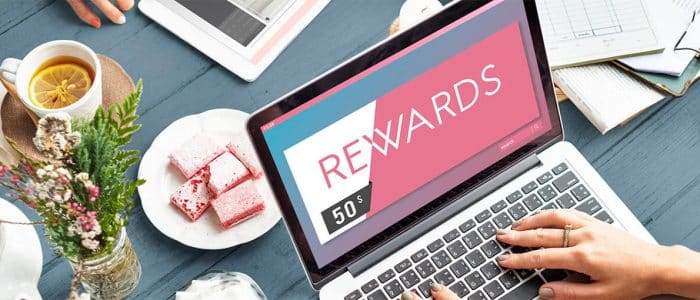Receipt Text Recognition and Loyalty Reward Programs
Take a good look at businesses big and small and you’ll discover that loyalty programs play a key role in their marketing strategies. And it’s not hard to see why.
From amplifying brand value to driving conversions, they play in key role in attracting new customers and turning those customers into passionate brand advocates.
Now, at a time when some SMEs are scaling back marketing to cope with the financial squeeze of recession caused by Covid-19, you could argue that loyalty reward programs don’t hold the same sway they had at the start of the year.
To this we say, why?
Right now is the opportune moment to scale up valuable marketing. SMEs – even blue-chip businesses – need to project an image of corporate stability, re-position themselves in the market, and offer customers something that meets their needs despite the economic circumstances.
How do they do this?
Well, there are several ways, but one strategy with a proven track record of success in times of economic uncertainty are loyalty reward programs driven by the valuable data that can be gleaned from receipt text recognition.
Interested in learning why customer loyalty programs are essential as we navigate Covid-19? Keep reading.
Evolving Customer Behaviour makes receipt recognition Loyalty Programs Vital
The pandemic has prompted a massive shift in consumer behaviour and store culture. We’ve talked about the death of the high street for quite some time. Yet, except for some notable brands, until early 2020, the high street was doggedly fighting off our online eCommerce landscape.
This has changed in 2020. Global local and national lockdowns promoted a surge in online retail like has never been seen before. Retailers have had to adjust to this new reality, with many migrating their entire product range from a physical store to exclusively online retail.
However, with so many eCommerce businesses having to adapt to evolving customer behaviour, competition has become fierce. Good loyalty programs offer something more than the competitors, that understand what their customers want, and which promote value can be the differentiator that help steer retailers through the recession.
For a comparisson of the top 3 receipt OCR API comapnies you can read through our websites or use comparisson sites like Crunchbase’s Veryfi Vs Tabscaner Vs Taggun page.
In essence, connecting with customers has never been more important. In a world fraught with uncertainty, where anxiety permeates many peoples lives, customer loyalty programs that give back to customers and provide real support can be the deciding factor of any brand loyalty decision.
Big Data and Customer Loyalty Programs
If you look at the key attributes of customer loyalty programs prior to the pandemic and compare them to the programs that we see today, you’ll notice something that, perhaps, shouldn’t be all that surprising: they haven’t changed much.
Now, what we mean by this is that they still focus on driving customer engagement through a personalized experience, one that’s tailored to individual customers.
Through analysing the data from several sources, including the use of Receipt Text Recognition and Loyalty Reward Programs recognition, retailers can understand and streaming promotions and processes, expose variability and optimize operations to achieve the best results whilst identifying new opportunities.
Of course, there are several metrics that retailers use to measure customer loyalty. One is redemption rate (or the percentage of rewards redeemed by customers.) Another is the engagement rate which helps retailers analyse the effectiveness of a reward program.
This data gives retailers the insight they need to see how loyal customers are. But, better still, retailers can use this big data to optimize their reward programs to maximize brand loyalty.
So, what’s the takeaway from this? Loyalty programs should focus on, if possible, not just engaging customers but immersing them in your brand. Through this, they’ll spend more money, become more loyal and advocate your brand. What’s more powerful that customers shouting how great your products or services are from the rooftops? Not much.
What About Automation and Insight for Receipt Text Recognition and Loyalty Reward Programs
Here’s the thing: this insight that receipt data can provide businesses can be the most powerful decision-making asset. This isn’t hyperbole, it’s fact. Ask anyone in the know and they’ll tell you that if you want to make informed decisions that drive progression, you need data. Plain and simple.
The biggest companies in the world, Apple, Google, Facebook swallow mountains of data like it’s about to disappear and use this information to optimize every aspect of their business.
Automation in Loyalty Rewards Schemes
Data-driven companies grow an average of 30% annually. Tell us a business that wouldn’t leap at the chance to growth 30% year-on-year! Now consider this: software that employs machine learning to extract later, like mobile receipt processing is conservatively expected to become a $100 billion industry by 2025.
Machine learning is undoubtedly one of the most profound assets any business can employ to improve customer retention and build brand advocates. Indeed, so compelling is that argument for deploying deep learning that research by Google and MIT in the states found that 50% of businesses globally use machine learning to get customer insight and steal a march on competitors.
As more and more businesses face considerable disruption across their operations as they learn to adapt to Covid-19, it shouldn’t be too much of a surprise to learn that technology will power loyalty programs, leaving traditional marketing practices trailing in the dust. Big data, analytics and digital tools are the instruments by which companies will not just survive the unfolding pandemic but thrive.
Receipt Text Recognition Insights
For any business to hone or tailor their product offerings they need to know the who, what, where and why. This is the key to understanding customer behaviour and once businesses know this, they can use the insights to drive marketing.
Let’s look at something as simple as how much customers spend. Wouldn’t it be great for businesses if they could pinpoint exactly how much people spend? Well, using receipt text recognition they can! How about where purchases are made? What other products or services customers purchase? When transactions are made? Wait a minute. Receipt text recognition and reporting can provide businesses with all these insights. And more.
How does this help? Two words. Tailored offers. Attenuate personalised exclusivity and personal and businesses can quickly turn customers into brand advocates.
Think of it this way. We’re living in the Covid-19 era. Many businesses are scrambling to stay afloat. Whilst integral to customer loyalty, some businesses may have let their customer service slip. Prices have rose. Delivery lead times increased. Interaction and communication have decreased.
What if your business could trump your competitors by providing a stellar service even in these times of great upheaval? You’d surely thrive. With insight this can be achieved.
Segmenting Customers for That Personal Touch
Customers are people just like you or I. They have their own specific goals, personalities are circumstances. One of the biggest makes that businesses make is just thinking something like, ‘everyone will want to buy or product.’ Do you think that a 95-year old technophobe wants to create a Tik Tok account and start sharing every aspect of their life? Probably not.
That was an extreme example, we know, but it makes a point. Addressing customers as being the same, regardless of their gender, age, circumstances, income, and intentions is one of the best ways to leave them feeling that your product or service just isn’t for them.
Any business that wants to improve its marketing and build great customer relationships must segment its customers into different groups.
Customer Segmentation in a Nutshell and why you need quality Receipt Text Recognition in Loyalty Reward Programs
Okay, so customer segmentation is the process of grouping customers together by identifying the similarities and acknowledging their differences. Again, this could include purchase history and spending habits, typical spending amounts, length of time as a customer, where they live, martial status… it’s up to you to decide how in-depth you want to go.
Data can be gleaned from varying sources, however, one of the more accurate ways to do this is to analyse mobile receipt processing to see who’s buying what, where and when. From this data, businesses can then create lasting, emotive customer connections.
Why do this?
There are three principal reasons why businesses should do this. Interested in learning them? Find each below.
- It helps businesses to gain direct marketing access to customers
- It presents an opportunity to upsell products or services
- It gives businesses the kind of insight that only big data can provide – with ease!
Once all this information has been gathered, businesses can then create personalized loyalty programs that appeal to clusters of customers, maximizing forecasted revenue.
But why is this so important during Covid-19? Look, we’re not going to sugar coat it. Now, more than ever, retailers need to make that vital connection with customers. Competitive is fierce. The economy is in a recession. Leveraging marketing activities with AI OCR receipt recognition gives retailers a chance to thrive at a time when customer spending is being cut back on.
Can you afford to not even give it a try?
Drive Brand Loyalty Through Customer Experience
There are many ways that businesses can attempt to drive brand loyalty. Notice, we said ‘attempt’ there. Customer experience matters. It lasts. It informs opinion, often being the driving factor in how brand influence customers.
Think of it this way. What if you’ve managed to wow potential customers with a stellar marketing campaign. Your ‘pitch’ has turned cynics into believers. It’s creative, personal, memorable, cool, and every other positive adjective under the sun. What then happens if customers interact with your brand online to be left underwhelmed, or even worse, feeling dismissed. All that hard work you’ve done to get customer attention goes down the toilet.
Brands that Focus on Experience
The experience customers have with your brand couldn’t be more important. Today, increasingly customers make decisions based on how brands make them feel as opposed to the price… there’s a reason why every single time Apple releases a new iPhone people are queuing round the block to pay $999 for a phone! The Apple iPhone is more than just a phone, it’s a lifeline. Apple has designed and built their products around the customer experience.
Now, with Covid-19 dominating the headlines worldwide, the latest iPhone 12 and iPhone Mini has more health and wellbeing apps than any other device before it. Apple has created a product that continues to drive customer loyalty by understanding the experience their customers want.
Critically, it’s much easier to sell new products to existing customers. Why? They’ve already bought into the brand. Look at it this way, over the last few years, Disney has given cinematic releases to several of their most popular animated films, Cinderella, Beauty and the Beast, The Lion King and people have flocked to see them – even they know that stories inside out having seen the animated feature ten, twenty, thirty.. who knows how many times!
Why? People bought into the brand long ago. Their experience of Disney is positive, happy, nostalgic – three of the most powerful emotional strings to pull!
Can every business be Disney? Absolutely not. But what they can do is focus on the customer experience. Loyalty reward programs that offer something unique, better, inviting, like employing marketing using informed data and receipt text recognition will drive customer engagement and create brand advocates out of occasional customers.
But why does this matter in these Covid-19 times. Well, right now, we could all do with a little positivity, a brand that we can rely on, an experience that tells us that in spite of all that’s going on in the world, engaging with people and continue to deliver a seamlessly high standard of service is top of any business agenda.
A brand that understands and promotes this is through experience is one that customers will universally gravitate to.
The Bottom Line: Receipt Text Recognition and Loyalty Reward Programs Drive Customer Engagement
It’s plain as day. Receipt text recognition and loyalty reward programs have and will continue to drive customer engagement right now and long after the world has recovered from Covid-19.
Whether promoting tailored special offers on digital receipts, optimizing customer experiences by creating emotive connections, or reacting to changing customer behaviour to reflect the times, there’s much that a partnership of receipt recognition and customer loyalty reward programs can offer clients.





